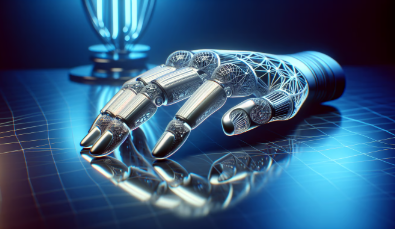Revolutionizing Rehabilitation in the Healthcare Industry
Integrating 3D printing into the development of medical prosthetics marks a revolutionary step forward in healthcare. This innovative approach enhances the quality of life for individuals requiring prosthetics and presents many opportunities for advancements in personalized healthcare solutions. By leveraging this cutting-edge technology, we are moving towards a future where prosthetics are more affordable, accessible, and tailored to each patient’s unique needs.
The Evolution of Prosthetics with 3D Printing
The journey of prosthetics has been long and arduous, with historical advancements often limited by the available technology. Traditionally, prosthetics were crafted using labor-intensive methods that were time-consuming and costly. However, 3D printing technology is revolutionizing this process, transforming how prosthetics are designed and manufactured.
With 3D printing, the creation of prosthetics has become significantly streamlined. This technology allows for rapid prototyping, enabling manufacturers to produce highly detailed and customizable components. This agility in design and production reduces costs and accelerates the overall development process, making prosthetics more accessible to those in need.
Personalized Solutions for Improved Outcomes
3D printing has revolutionized the field of prosthetics by offering highly customized, flexible, and adaptable solutions that significantly enhance the quality of life for individuals in need of limb replacements. Unlike traditional prosthetics, which are often expensive and require lengthy production times, 3D-printed prosthetics can be designed to fit each patient’s unique anatomy, integrating specific functionalities tailored to their lifestyle. Let’s explore how customization, flexibility, and adaptability contribute to more effective prosthetic solutions.
1. Customization: Precision-Designed for a Perfect Fit
Customization is one of the most significant advantages of 3D-printed prosthetics. Everyone has a unique anatomy, and a “one-size-fits-all” approach often results in discomfort and limited usability. With 3D printing, prosthetic limbs can be:
- Digitally scanned and modeled to match the precise dimensions of a patient’s residual limb, ensuring a snug and secure fit.
- Designed for comfort by integrating soft, flexible materials in socket areas to reduce friction and pressure sores.
- Aesthetically personalized with colors, patterns, or artistic elements that reflect a patient’s personal style, boosting confidence and acceptance of the device.
This level of customization ensures that users experience improved mobility, reduced pain, and an overall higher quality of life.
2. Flexibility: Unique Features for Individual Needs
Individuals have different functional needs based on their daily activities, occupations, or hobbies. 3D printing allows for the integration of unique features that cater to specific lifestyles, such as:
- Activity-Specific Adjustments: Prosthetics can be designed for various purposes, such as running, swimming, or even playing a musical instrument.
- Sensor Integration: Some advanced designs can incorporate smart sensors that help improve grip strength and movement precision.
- Lightweight Materials: Unlike traditional heavy prosthetics, 3D printing enables the use of lightweight yet durable materials, making it easier for users to wear and use their prosthetics for extended periods.
By providing flexibility in design, 3D-printed prosthetics cater to users’ diverse and evolving needs.
3. Adaptability: Continuous Enhancements for Long-Term Use
One of the biggest challenges with traditional prosthetics is that they can become obsolete or uncomfortable as a patient’s body changes over time. 3D printing offers a solution by enabling:
- Rapid modifications and upgrades to accommodate changes in limb size, growth (especially for children), or evolving medical needs.
- Cost-effective replacements where only specific parts of the prosthetic need to be reprinted rather than the entire limb.
- Advancements in technology to be incorporated into existing designs, such as AI-driven enhancements for better movement control.
This adaptability ensures patients can always access the latest innovations without the high costs and long waiting times associated with conventional prosthetics.
Cost-Effective Manufacturing
The cost implications of traditional prosthetic manufacturing have long been a barrier to accessibility. However, 3D printing offers a cost-effective alternative, drastically reducing material waste and labor costs. Organizations such as Forbes have highlighted how this technology can reduce the overall financial burden on both healthcare providers and patients.
Moreover, the capability to produce prosthetics on demand means that patients can receive their devices faster without the lengthy wait times associated with traditional methods. This production speed is crucial in cases where quick adaptation is necessary, such as for growing children or individuals with evolving medical conditions.
The Role of Nota3D in Advancing Healthcare Prosthetics
As a leader in 3D printing solutions, Nota3D is advancing the capabilities of medical prosthetics. By offering a range of specialized printers and software tailored for the healthcare industry, Nota3D provides invaluable support to medical professionals seeking innovative solutions.
Supporting the Industry
Nota3D’s comprehensive services include:
- Leasing and purchasing options for healthcare-specific 3D printers.
- Expert guidance on selecting the most suitable printing technology.
- Rapid repair services to ensure minimal disruption in manufacturing.
Innovating Medical and Dental Solutions
With their expertise, Nota3D is uniquely positioned to enhance both the medical and dental sectors through:
- Providing tools and training for professionals to harness 3D printing technology effectively.
- Supporting the development of innovative dental and medical prototypes.
- Enabling the creation of unique, patient-specific dental applications.
The future of medical prosthetics is bright, with 3D printing paving the way for a new era of accessibility, customization, and efficiency. As this technology continues to evolve, it holds the potential to transform the lives of countless individuals, empowering them with solutions that were once beyond reach. Visit our website to learn how Nota3D can support your 3D printing needs.
